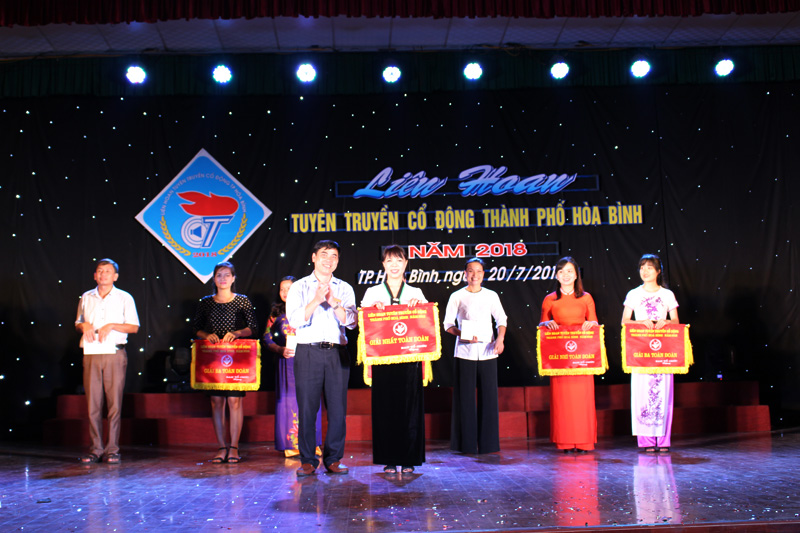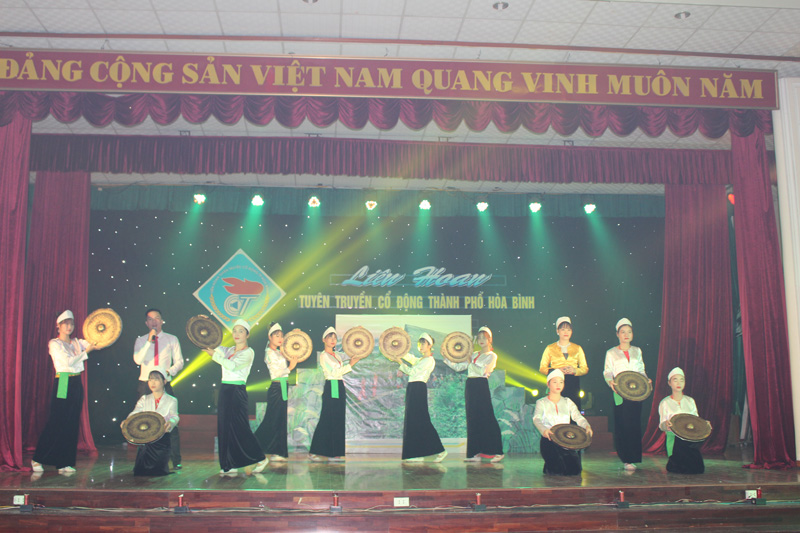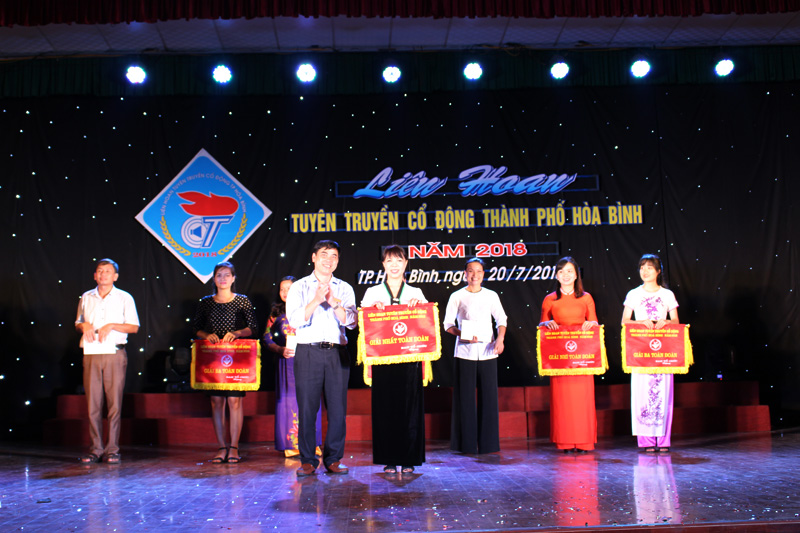
(HBO) - Hoa Binh city has organized a propaganda festival in the city in 2018. More than 15 organizations, communes and wards with more than 400 propagandists have participated in the event.

The performance "Collecting, preserving,
promoting the Muong ethnic cultural identity" of Yen Mong commune was
being performed at the festival.
The propaganda agenda was been organized with
a mixture of the following types of art: skits, dance – singing performances,
oral propaganda. The participation time of each unit is not less than 25
minutes and at the maximum of 30 minutes. The program must have a tight theme,
layout and structure. According to the organizers’ evaluation, 15 performances
had been carefully prepared by the units in terms of content, costumes, props,
sounds, lighting, etc. 15 performances of propaganda focused on topics such as:
All people unite to build new rural area, urban civilization, food hygiene and
safety, and to preserve national cultural identity.
At the end of the festival, the Organizing
Committee awarded 11 A prizes, 14 B prizes, 19 C awards in the following
categories of Singing, dancing, skits, propaganda presentation, program layout,
excellent actors and skits.
The Organizers awarded the team prizes in
terms of commune level with the first prize for Yen Mong commune, the second
prize for Thai Thinh commune, Hoa Binh and Su Ngoi communes won the third
prizes, the consolidation prizes were awarded to Thong Nhat, Dan Chu and Trung
Minh communes. In terms of ward team prizes, the first prize was given to
Phuong Lam ward; the second one belonged to Huu Nghi and Dong Tien wards, the
third prize were given to Thai Binh and Tan Thinh wards, the consolidation
prize included Cham Mat, Tan Hoa and Thinh Lang wards.

The Organizing Committee awarded the prizes
of the whole teams to the delegations.
With an increasingly vibrant and widespread emulation movement aimed at building cultured residential areas and cultured families, Yen Thuy District has been making steady progress toward improving both the material and spiritual well-being of its people, while fostering a civilized, prosperous, beautiful, and progressive community.
Once lacking recreational spaces and community facilities, Residential Group 2 in Quynh Lam Ward (Hoa Binh City) has recently received attention for the construction of a new, spacious, and fully equipped cultural house. The project followed the model of state support combined with public contributions in both labor and funding.
The "All people unite to build cultural life" movement, which has been effectively integrated with Kim Boi district’s socio-economic development goals, is fostering a lively spirit of emulation across local residential areas, hamlets, villages, public agencies, and enterprises. In addition, through the initiative, traditional cultural values are being preserved and promoted, while community solidarity and mutual support in poverty reduction and economic development are being strengthened.
A working delegation of the Hoa Binh provincial People’s Committee led by its Permanent Vice Chairman Nguyen Van Toan on June 11 inspected the progress of a project to build the Mo Muong Cultural Heritage Conservation Space linked to tourism services in Hop Phong commune, Cao Phong district.
Born and growing in the heroic land of Muong Dong, Dinh Thi Kieu Dung, a resident in Bo town of Kim Boi district, in her childhood was nurtured by the sweet lullabies of her grandmother and mother. These melodies deeply imprinted on her soul, becoming an inseparable part of her love for her ethnic group's culture. For over 20 years, this love for her hometown has driven Dung to research, collect, and pass down the cultural values of the Muong people to future generations.
In the final days of May, the Ethnic Art Troupe of Hoa Binh Province organized performances to serve the people in remote, mountainous, and particularly disadvantaged areas within the province. These were not just ordinary artistic shows, but they were the meaningful journeys aimed at spreading cultural values, enhancing the spiritual life of the people and contributing to the preservation of ethnic minority cultural identities.




